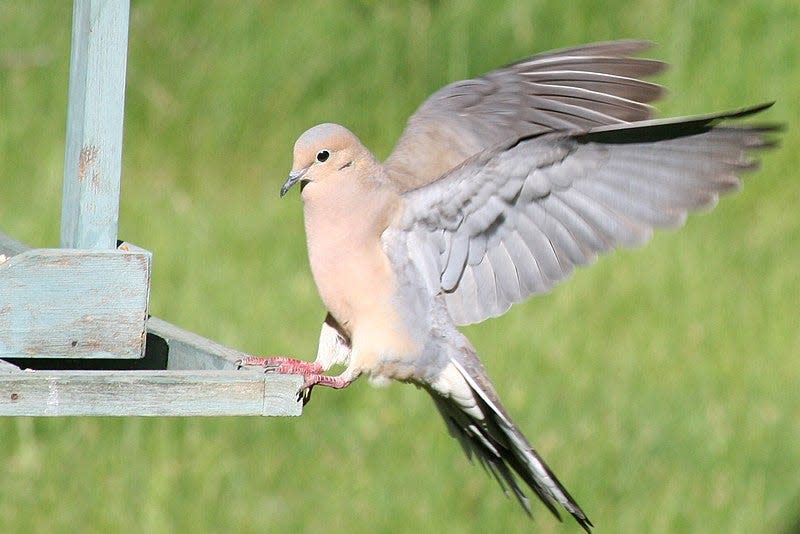Have you spotted any of these birds yet? These are the 10 most common for March
Sandhill cranes are making their annual noisy reappearance in Indiana a little early this year.
IndyStar’s recent edition of Scrub Hub answered some questions about why the cranes are here and where to best spot them.
USA TODAY analyzed and organized millions of backyard bird observations since 2011 as part of Project FeederWatch, a citizen science program and joint effort of The Cornell Lab of Ornithology and Birds Canada.
As birders flock to the outdoors to catch a glimpse of the beginning of spring migration, here are the top 10 most common birds you might see at your feeder this month.
Scrub Hub: What's that odd gobbling-like sound way up in the sky? Hint: It's not turkeys.
Indiana’s most-sighted birds in March
House sparrow, Passer domesticus - This nonnative songbird originates from Eurasia and northern Africa and was first released in the U.S. in 1841. This is one of the most widespread and abundant species in the world.
American goldfinch, Spinus tristis - This perching bird will remain up north during the winter if there is a good supply of food. The birds are late nesters and wait until mid-summer to start settling down for breeding.

Dark-eyed junco, Junco hyemalis – These New World sparrows overwinter throughout much of the U.S. They prefer conifer and mixed-wood habitats, especially in open spaces like edges or clearings.
House Finch, Haemorhous mexicanus – Originally found only in the Southwest, these birds were introduced to other parts of the U.S. in the 1940s. These flittering finches are adaptable and have learned to live in cities, towns and farmland.

Northern Cardinal, Cardinalis cardinalis – Indiana’s state bird shares the same title in at least sic other states. The perching bird has slowly been expanding its range north. Males will actively attack nest intruders, even its own reflection in windows.

Mourning Dove, Zenaida macroura – With one of the most easily identifiable coos, these doves can raise up to six broods every year. Mourning doves are found in a wide variety of places but avoid unbroken forests.

European Starling, Sturnus vulgaris – Tough, adaptable and smart, these starlings were brought to the U.S. in 1890 and occupy most of the country. The birds gather in large flocks during fall and winter and break up during the mating season.

Common Grackle, Quiscalus quiscula – This blackbird nests in colonies and large flocks gather in the evening as they head toward roosts. Grackles can be found foraging in farm fields, pastures and suburban laws.

Red-winged blackbird, Agelaius phoeniceus – These bold perching birds will aggressively defend nests, even swooping at humans walking close by. When it’s not nesting season, these blackbirds will occasionally roost in huge groups.

Blue Jay, Cyanocitta cristata – Loud and colorful, these magpies will eat almost anything. These jays are intelligent and are known to slip through treetops to rob nests of other birds.

Karl Schneider is an IndyStar environment reporter. You can reach him at [email protected]. Follow him on Twitter @karlstartswithk
IndyStar's environmental reporting project is made possible through the generous support of the nonprofit Nina Mason Pulliam Charitable Trust.
This article originally appeared on Indianapolis Star: Indiana's most common birds in March
